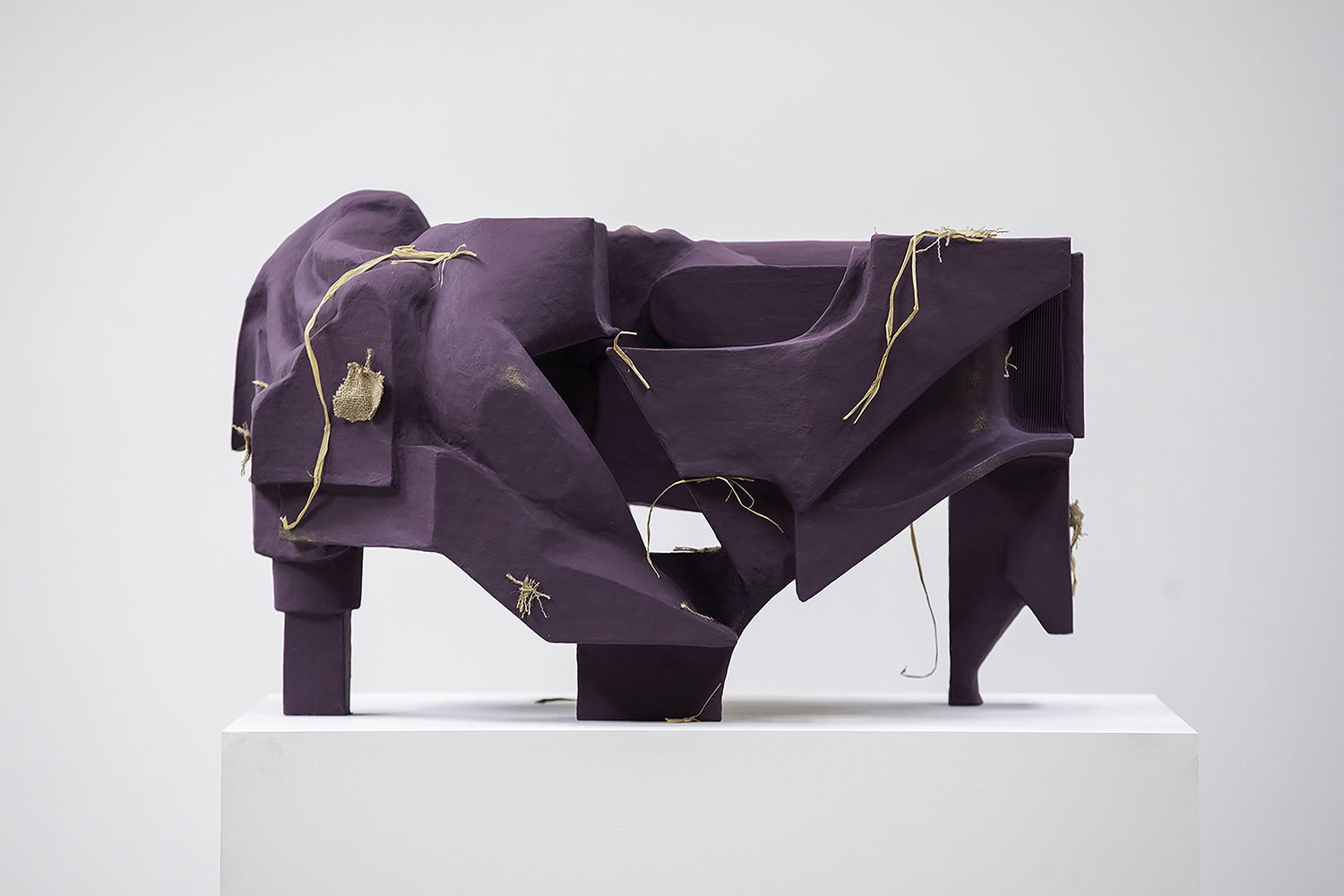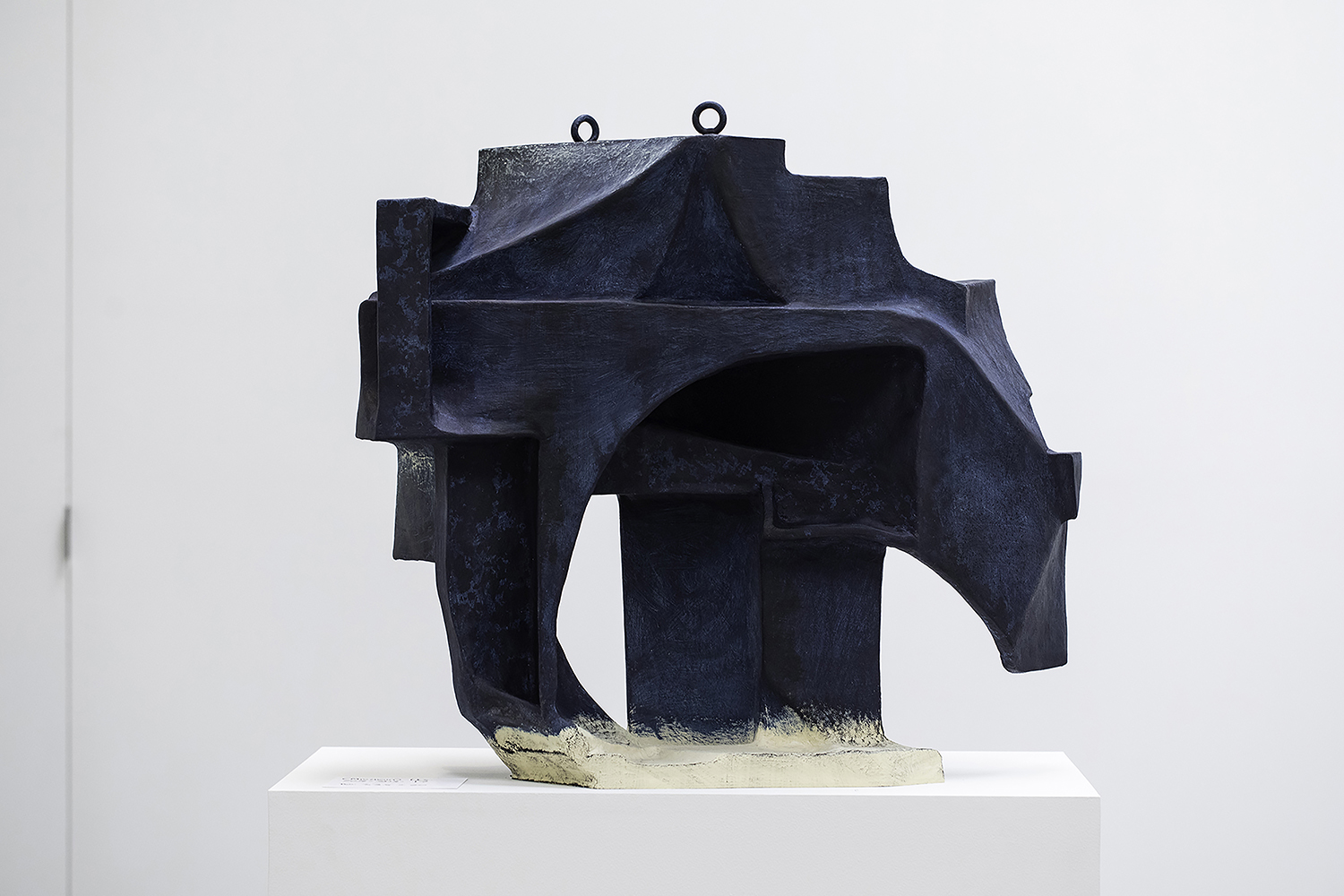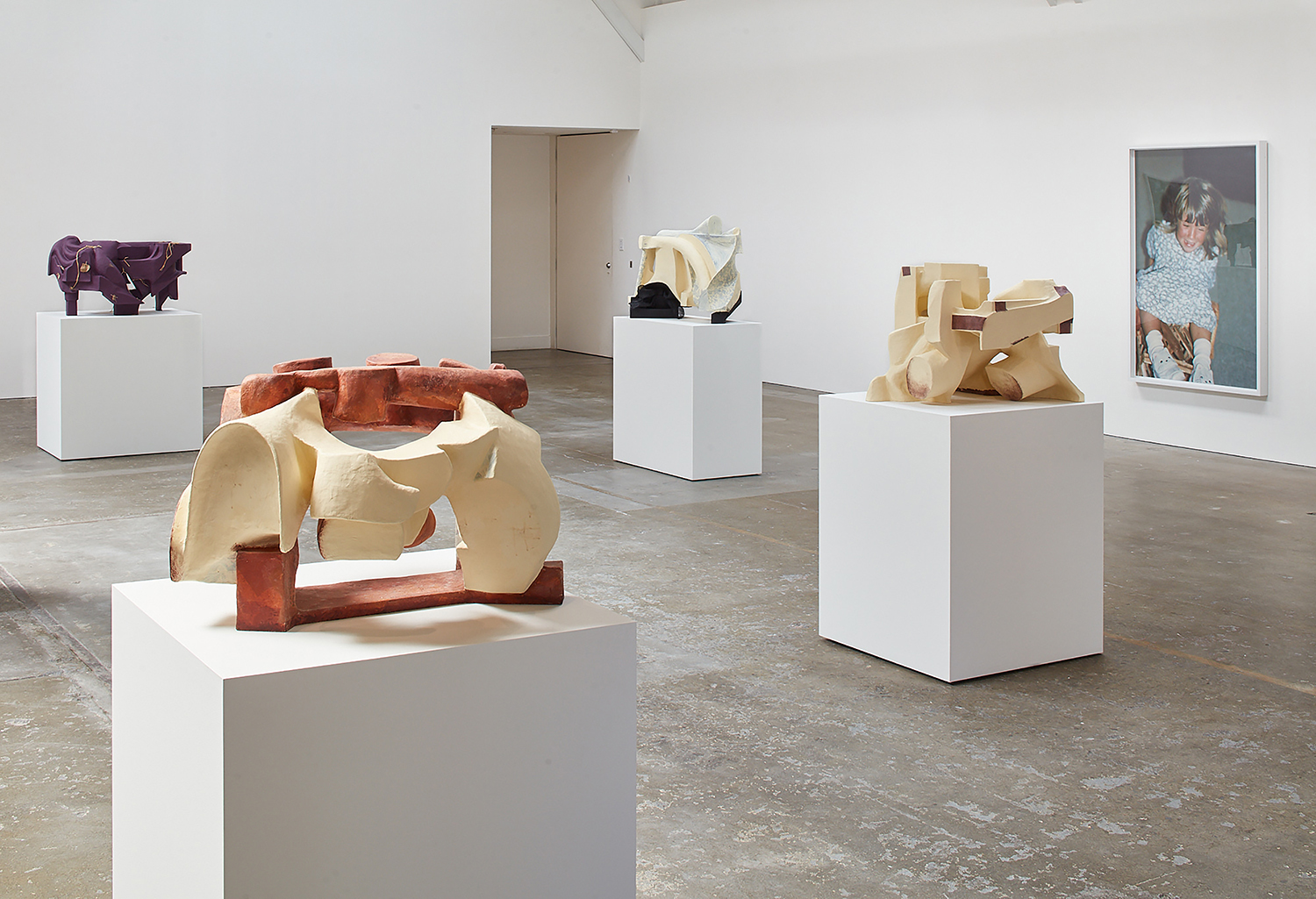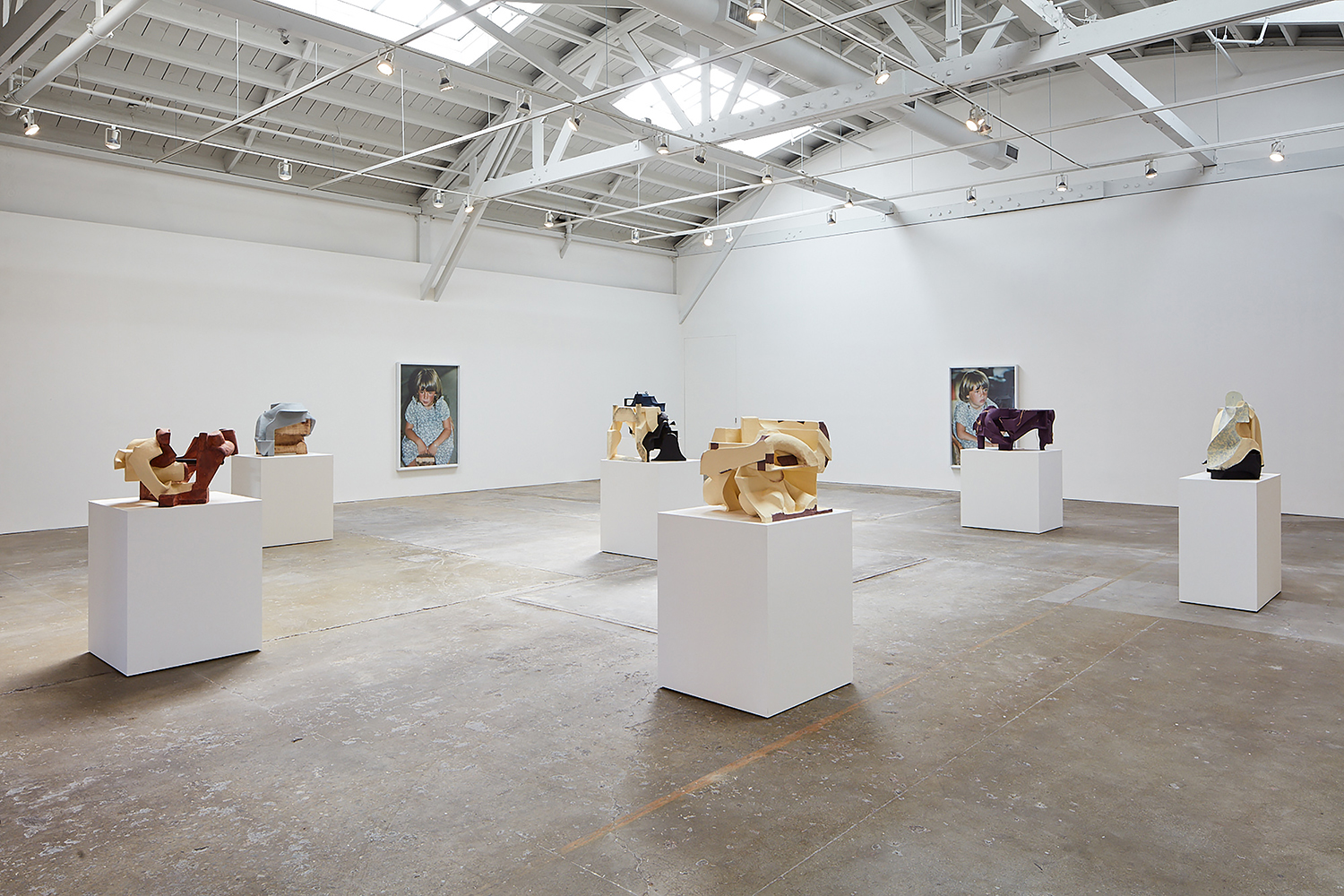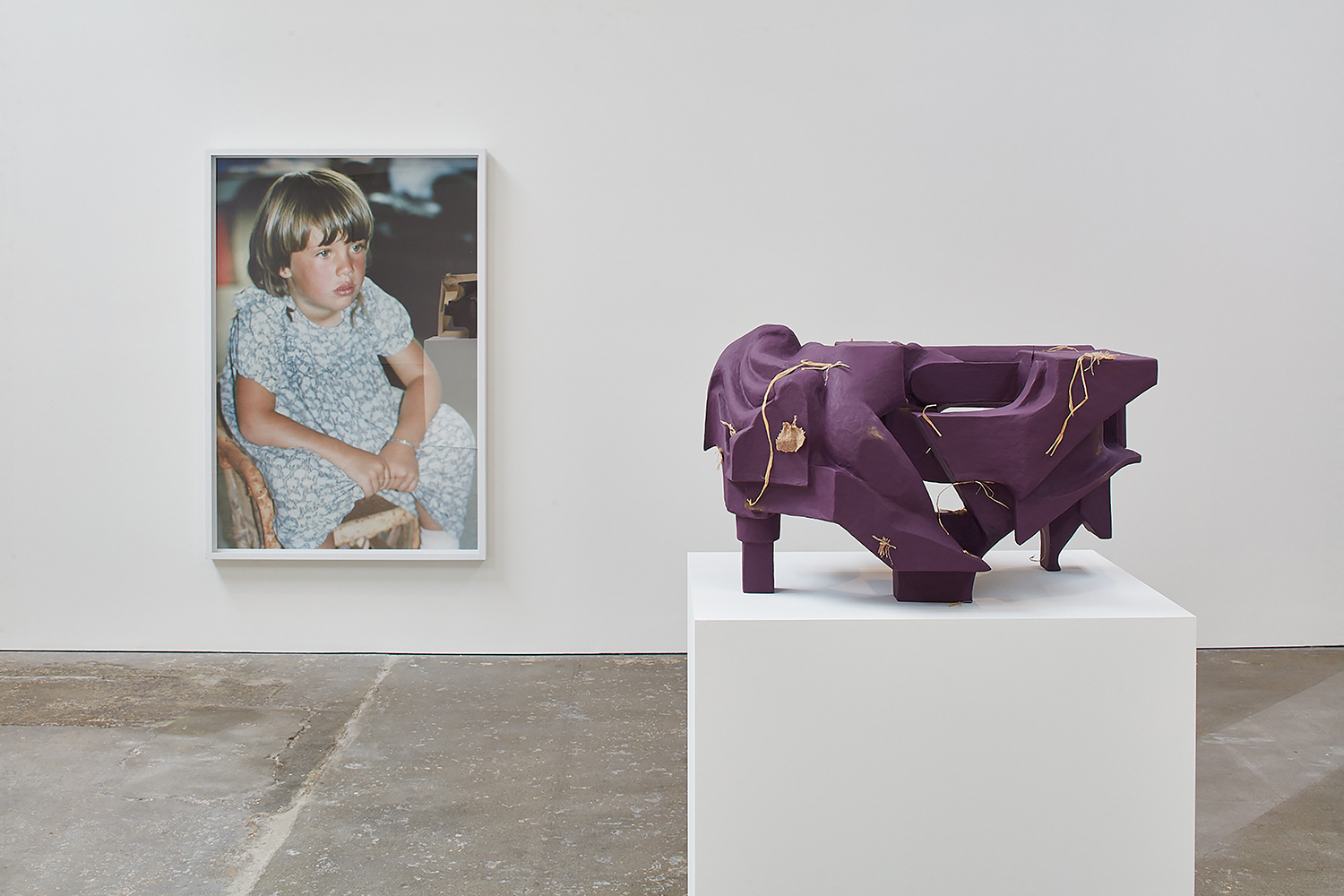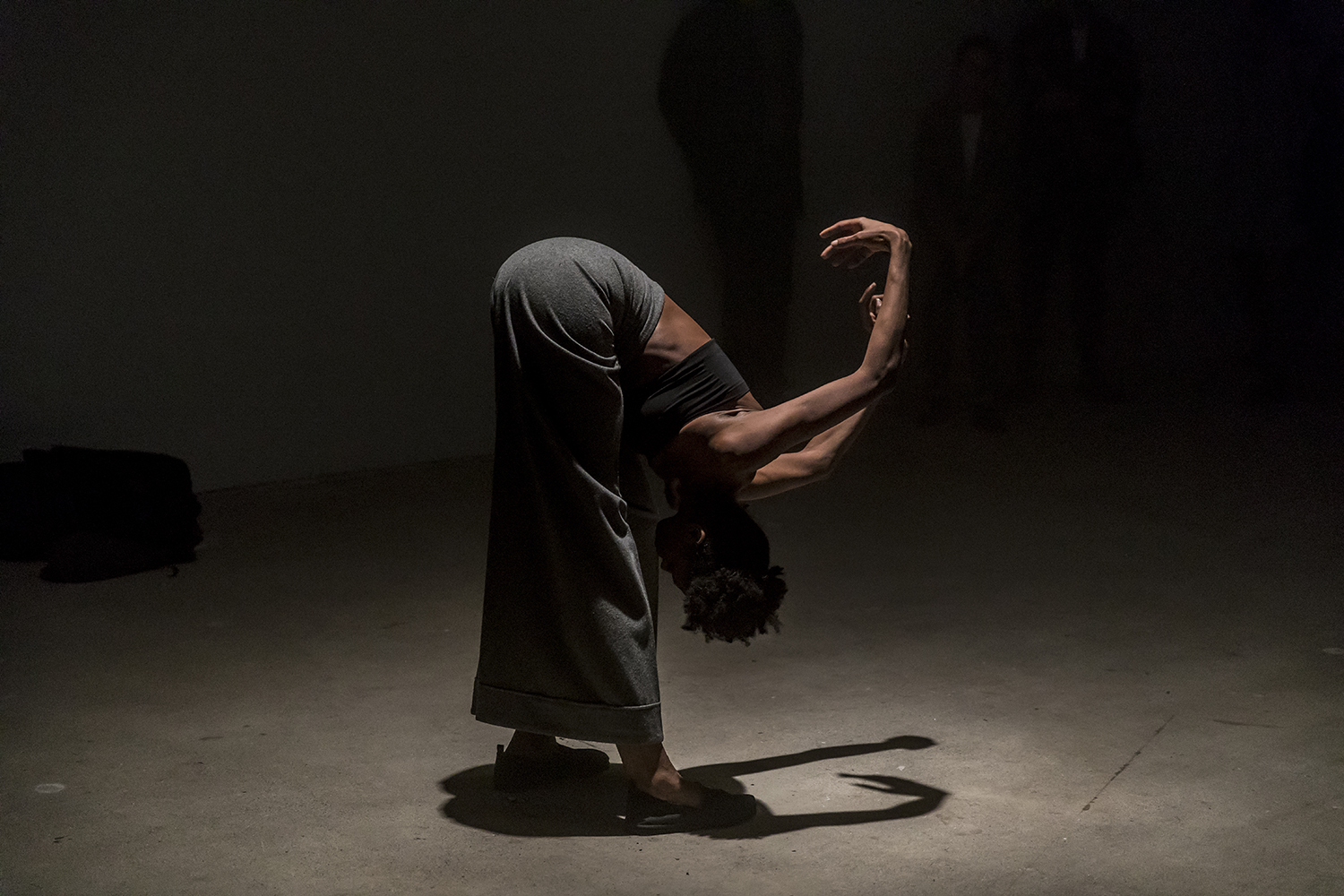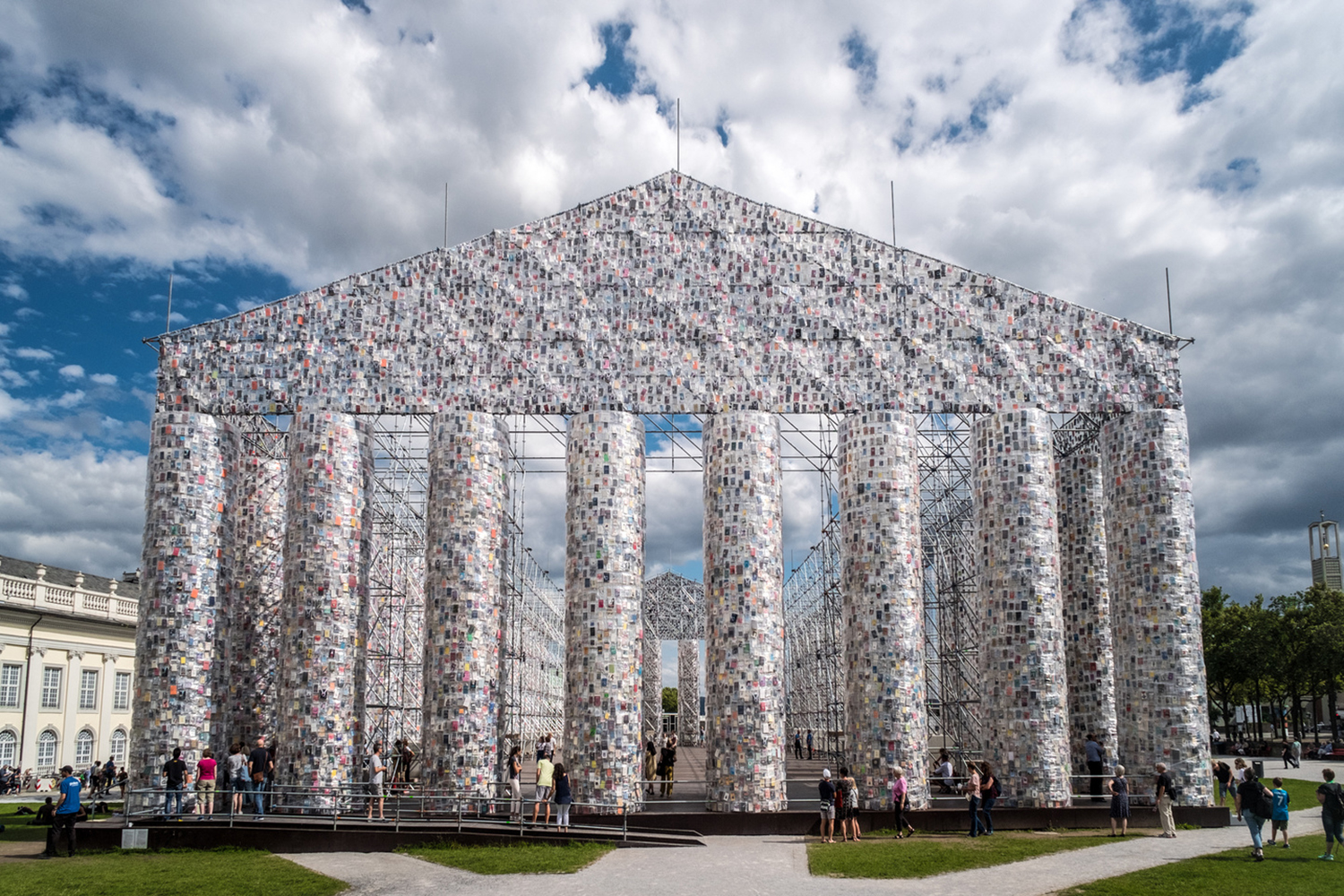In Vincent Fecteau’s most recent solo exhibition at the CCA Wattis Institute — his first show in San Francisco, his adopted city of residence (he was born in Islip, NY), in fifteen years — seven brand-new sculptures, unmistakably Fecteau’s, sit on white pedestals. They appear slightly bulkier, more muscular, and their surface treatment somewhat less powdery than sculptures I had seen before. I also notice features that I don’t remember detecting in any of the artist’s previous body of work: proto-functional items, like eye-ring screws or peering tubes; a staircase and other explicit references to architectural forms; and baffling thingies: raffia fibers, tiny pieces of jute, but also a flawlessly executed black burlap ribbon. They contaminate otherwise smooth surfaces more like forgotten traces of the process of making, rather than manifest ornaments.
I learn that, on this occasion, Fecteau experimented with a new technique: if in the past he would make his objects entirely by hand, in papier-mâché or clay resin, for these new ones he had small-scale clay models 3-D scanned, enlarged virtually, and sculpted by a CNC router out of foam. He then finished the shapes with the usual veneer of acrylic paint. If Fecteau’s sculptural practice has often raised questions about the dividing line between art and craftsmanship, this new body of work recasts that diatribe into the more ancient antithesis between the man- and the machine-made. As I rehearse in my mind the object’s gestation, I can’t help but envision an equivocal relationship with technology in which artistic invention lends itself to mechanical production, only to later re-appropriate the latter’s output in a frenzied attempt to upset the integrity of the industrially manufactured whole, reintroducing human imperfections and restituting the object to the realm of the sensible.
In a 2001 Artforum entry, critic Bruce Hanley wrote that Fecteau’s sculptures “investigate the sculptural possibilities and erotic atmospherics of decor.” Today, it is hard for me to see these sculptures as marginal and subtle as only ornaments can be. The gaze perceives them as hard-to-dismiss entities — they are elephants in the room. And, leveraging their material criticality, they point to the following truth: how they are made and what they are made of — their intimate nature — is somewhat unimportant; they themselves are casts of the mind’s deepest secrets, dream’s navels given a three-dimensional shape. (So the ribbons and the strings are bits of suppressed memory surfacing to consciousness; and the hooks, the tubes, and the stairs hint at that process taking place.) Yet if Fecteau’s sculptures are representations of the unconscious, that unconscious has the aspect of a prototypical machine. What are they if not models for spaceships, power stations, high-sea oil platforms, brutalist housing complexes, and, broadly speaking, the architectures of techno-utopia?
The seven sculptures are surrounded by a photographic series by the late artist Lutz Bacher. Bacher and Fecteau were friends, and Fecteau used to share with Bacher found images that the latter occasionally transformed into artworks. In their earlier life, the images comprising the series had been Fecteau’s. They depict a young girl, blonde and dressed in a flowery blouse, in different emotional states: here she’s absent, lost in her thoughts; there she is choked up, shedding tears. The coexistence of many sentiments in one individual, in one space, parallels the abstractedness of Fecteau’s sculptures: one can attach to them as many meanings as their surface’s many facets. Yet Bacher’s contribution also points to a state in life — infancy — when the struggle between consciousness and unconsciousness is at its earliest stage, a stage when creativity is pure and the functioning of the mind hasn’t been engineered yet by the machines of society.

